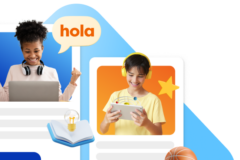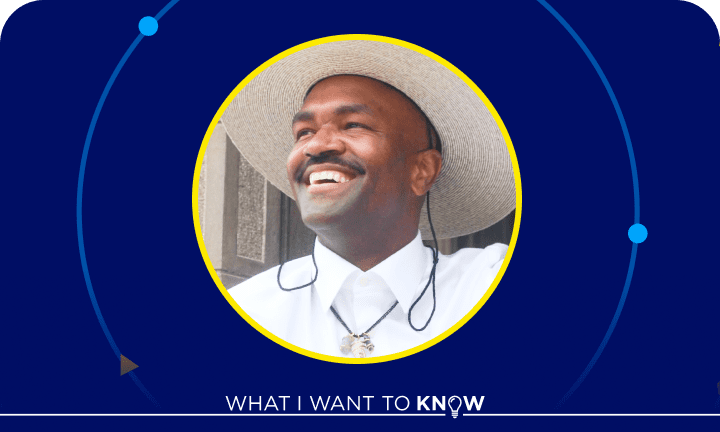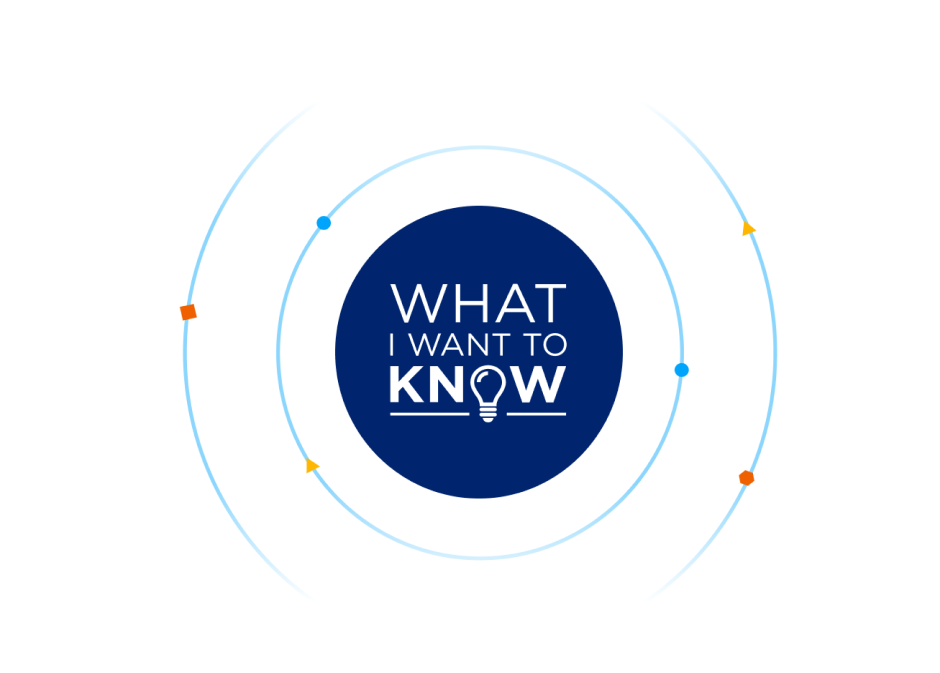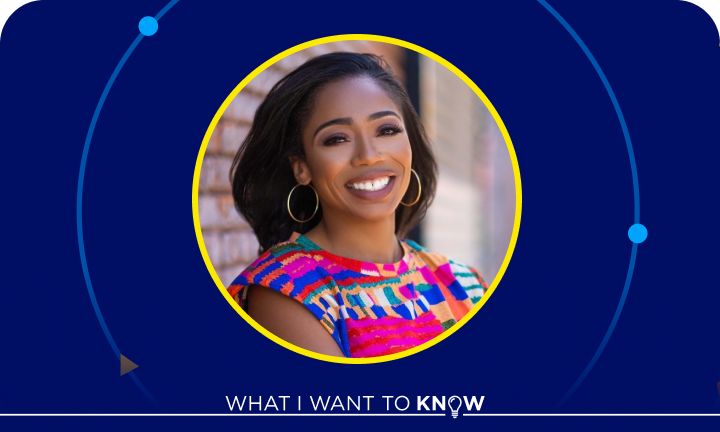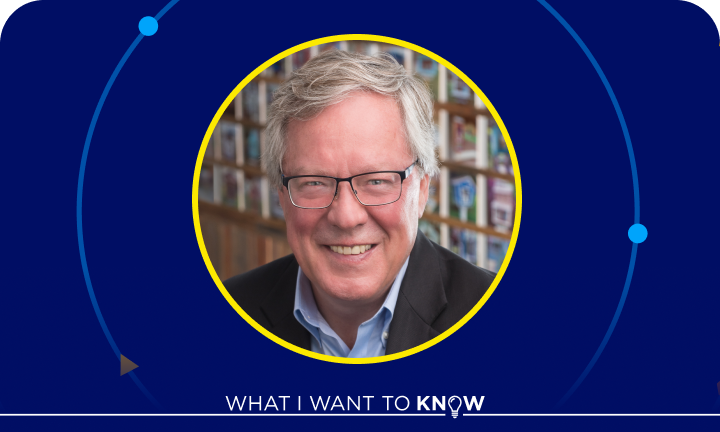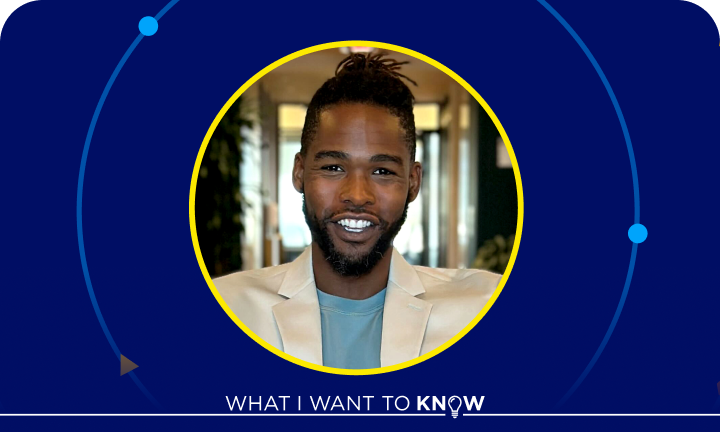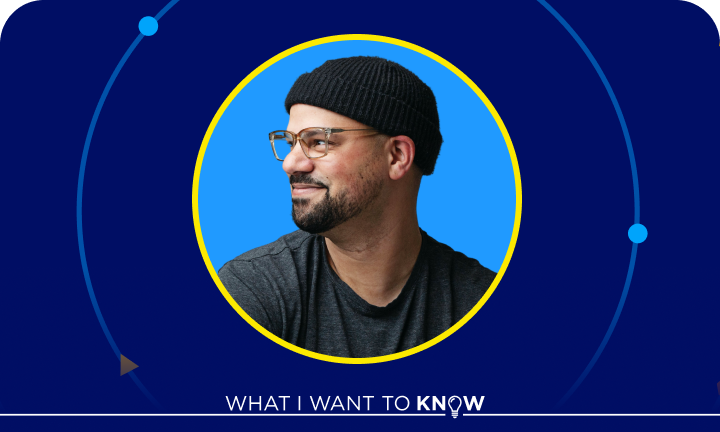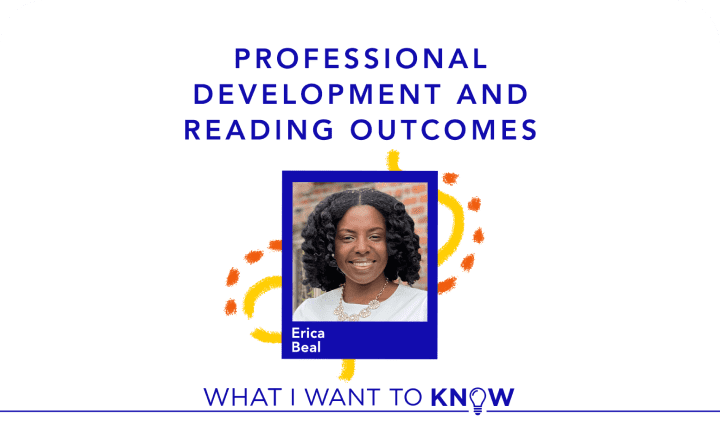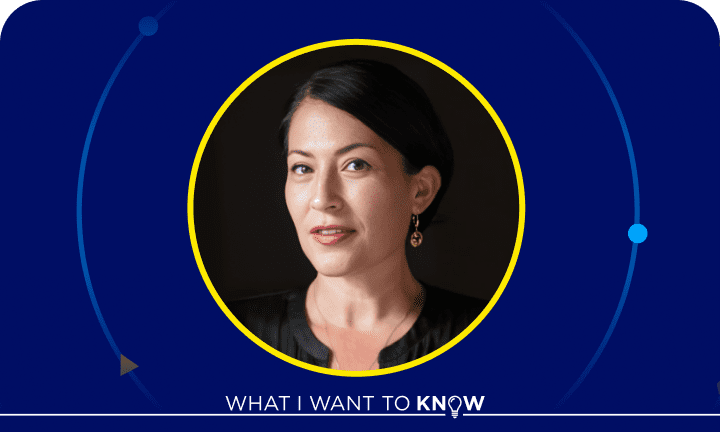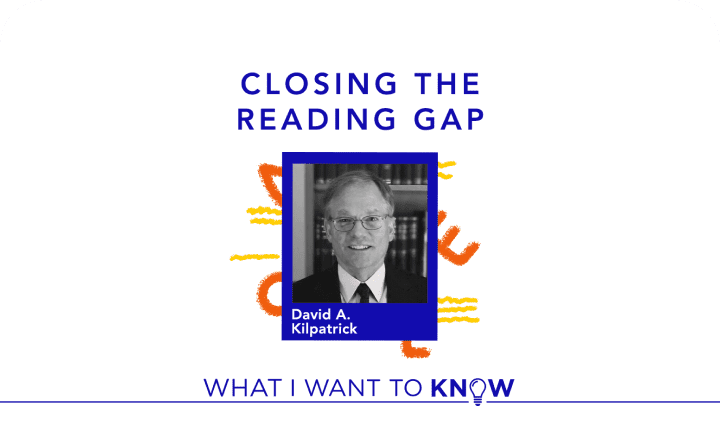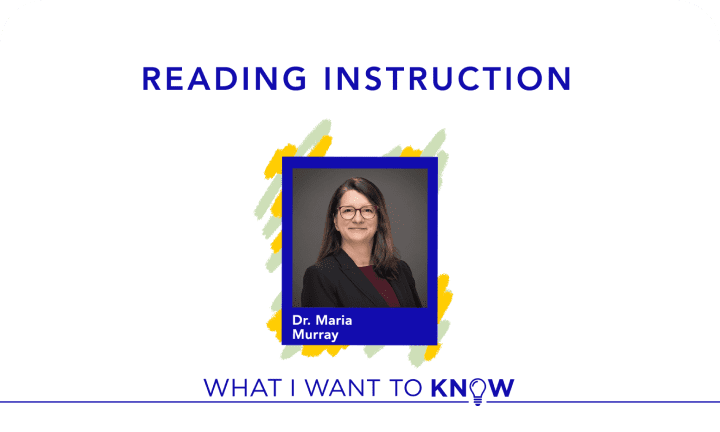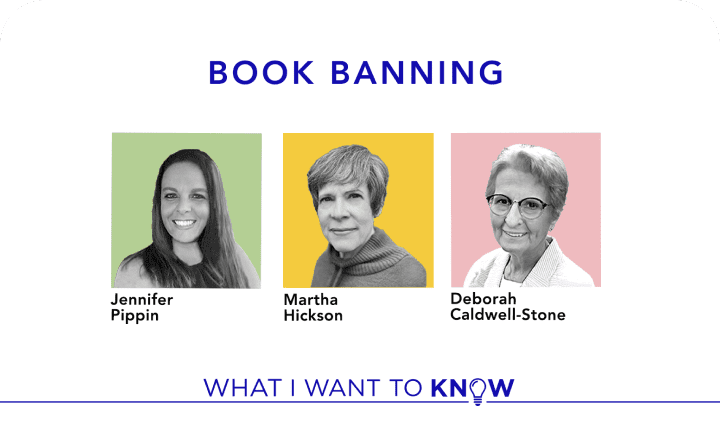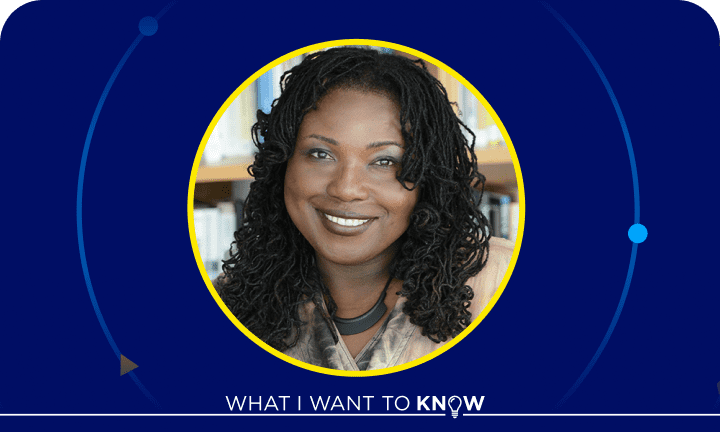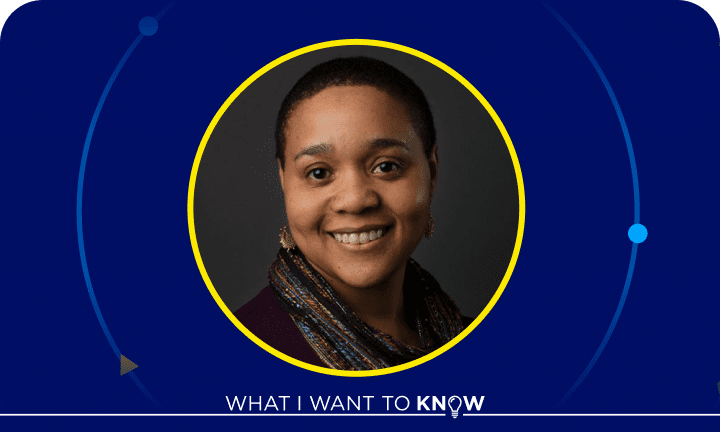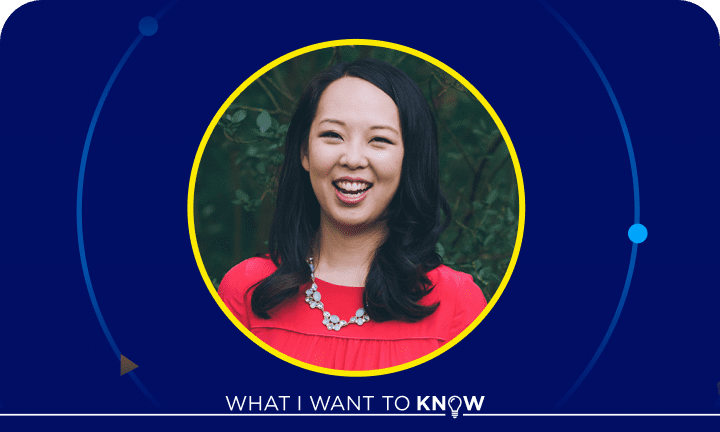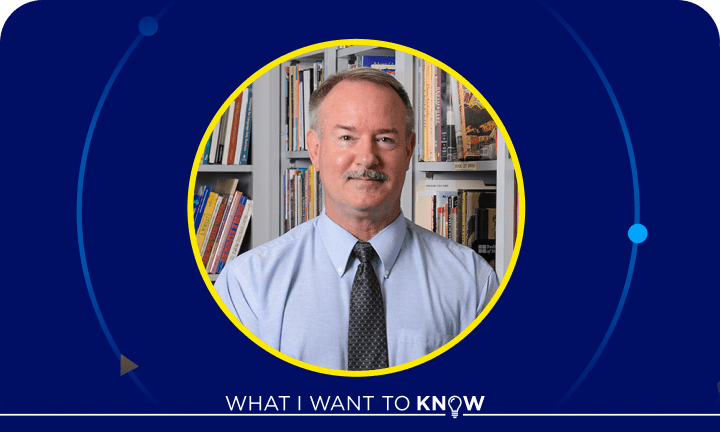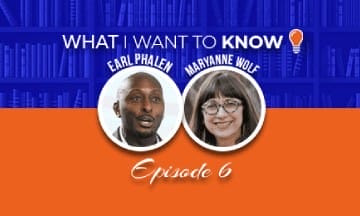May 22, 2024
EP. 155: Why is storytelling important for children?
Storytelling is one of the most powerful learning devices. Not only does it play a role in a child’s language and cognitive development, but it can also teach them about the world around them.
What are the benefits of storytelling? How can children’s literature help develop essential skills? And how can we encourage a love of storytelling in our students?
In this episode, Jesse Byrd joins Kevin to discuss the importance of storytelling for children.
Listen on: Apple Podcast, Spotify
Meet Jesse
Jesse Byrd is an award-winning children’s book author and the youngest African American NPR Foundation Board Member.
Jesse has performed readings of his children’s books to over 25,000 kids and partnered with Airbnb Experiences to provide families and corporations with virtual storytime experiences during the pandemic.
Kevin: Storytelling is one of the most powerful learning devices. Not only does it play a role in a child’s language and cognitive development, but it can also teach them about the world around them. What are the benefits of storytelling? How can children’s literature help develop important skills? And how can we encourage a love of storytelling in our students? This is “What I Want to Know.” And today, I’m joined by Jesse Byrd to find out.
Jesse Byrd is an award-winning children’s book author and the youngest African American NPR Foundation board member. Jesse has performed readings of his children’s books to over 25,000 kids and partnered with Airbnb Experiences to provide families and corporations with virtual story time experiences during the pandemic. He joins us today to discuss the importance of storytelling for children. Jesse, welcome to the show.
Jesse: Thank you so much for having me, Kevin. I really appreciate it.
Kevin: Now you are a true Renaissance man. I’m glad to have you on. You’ve done so many different things, but you started out in the tech field, as I understand. Is that correct?
Jesse: Correct. My first official job out of high school was working for Google. Now I can’t do anything techie. I can’t code, I don’t know how to do any of that. But, you know, my young 20-something self thought that everybody who worked at Google was a coder. Little did I know a company that big needs people of all different types of skill sets. They need chefs, they need environmentalists, they need lawyers. And I was sort of a people person. I helped manage processes and people.
Kevin: And it is obvious you’ve been conditioned to qualify that role at Google because so many people expect you to be a techie. But you also had, obviously, this burning need to write. And talk a little bit about what led you to make that decision. And the reason why I’m asking the question is not just to share your story, but so many young people today feel like they’re slotted in a certain direction, but they want to do something else. And there has to be sort of a confidence booster that sort of says, “Okay, I’m going to do this.” What was it for you?
Jesse: For sure. I mean, I was so lucky to have parents who deeply cared about education. And they made the sacrifices to make sure that I had a chance to go to some good schools, and then I got into a good college. And then when I got to Google, it really felt like, you know, if I could really quantify it, Kevin, it felt like I was being a little bit selfish. It felt like I was taking the advantages that had been afforded to me by my parents and really just taking my ball and going home. I got a good job, I’m taken care of, cool. But it didn’t really feel like I was providing a service beyond sort of my 9 to 5.
I wasn’t really spending my time here on Earth bringing my dish to the potluck of life. I knew what lit me up with storytelling and storytelling for young audiences. And I felt like I was hiding behind a safe life, a comfortable life, a life that’s on the railroad tracks.
Kevin: Wow.
Jesse: And, you know, it just didn’t seem right to me, and it didn’t seem as fulfilling. And so that’s what really sparked me to take the leap from, you know, a comfortable tech job, working for a top 100 company to, you know, writing for children.
Kevin: What was the first thing you wrote? Because the first one is where you really are making the investment in the change.
Jesse: For sure. My first book was a middle grade novel called “King Penguin.” It was about 250 pages, and I was working on it while working at Google. So I would work at Google from 9 to 5, and then from 5 to 9, I was working on my children’s book manuscript. Once it was done and edited, I felt like I was ready to take the leap to basically raise enough money to publish it myself. But even before that, I had submitted it to 200 agents, 200 publishers total, really thoughtful submissions, and I got nothing back. You know, radio silence is mostly what you’ll get if a publisher or an agent isn’t interested. Or form rejection letters for the most part. Only a few people really gave me a tailored, you know, rejection and let me know why it wasn’t right for them or their list or their house at that time.
But I felt like, look, if this can even impact 10 kids, it’s worth it. You know, I’ve spent all of this time. I poured this love and energy into it. I want to see it out into the world and see what happens, even though the industry is telling me that it isn’t really vibing right now. And so I quit my job, went and tried to fundraise enough money to self-publish. I did not fundraise enough money the first time. Had to go back to work for another year and a half, and then I quit again. And after, family and friends picked me up and encouraged me and said, “If you really love this, you’ve got to keep going.” So I quit again, fundraised the second time. And then that time, we got enough money to self-publish that book, and it won awards in Paris and Los Angeles. And then I had more opportunities from there.
Kevin: Well, one thing about the publishing industry, and I’ve written several books myself and I’ve worked with publishers, big publishers and self-publish, it’s definitely not an indictment on you or your work when you don’t hear back from them. That industry is in a state of flux. But the fact that you had the resiliency to keep pushing and following your passion is laudable. And, you know, now you are on the NPR Foundation board, and you are also a well-known author. What impact do you feel you have had on the children? Because you’ve read to over 25,000 kids. You’re actively involved in interacting with kids, not just through your writings, but through face-to-face contact. Talk about that experience.
Jesse: You know, in my heart of hearts, I believe dreams in their truest form are a public service. And I really feel like that about writing. I feel like that about storytelling. So the gift that I feel like has been given to me is just to be able to build relationships, to spend time with all of these young minds and their creativities, their thoughts, their dreams, their fears.
You know, my truest goal for my career isn’t to be seen as something above, you know, not the accolades, not teacher, you know, none of that. I just want to be a friend. I want to be a friend to the kids. I want to be a friend to, you know, fellow artists that are trying to make art that’s true to themselves and navigate, you know, the capitalistic side of the industry. And I want to feel like I’ve served the best that I can serve, you know, everybody who the art is for.
And so connecting with the kids is what really lights me up. I mean, it really, really keeps me going. I just did a story making workshop in San Francisco this past week at the Golden State Warriors Arena with 15 kids from San Francisco, where we took them through the process of making a comic book story. So they’ll have a published book out on the market within about six or seven months. But hearing their ideas for their characters and their worlds and what the drama is going to be, and you know, what the color palette should be, they’re just full of life. They’re full of spark. It’s unbound. And I’m grateful to even be near that because it helps me in what I do.
Kevin: One of the reasons why I wanted you on, Jesse, it’s to really dig a little deep into this idea and this notion of storytelling. I mean, storytelling is in everything. I mean, you’ve got the Bible, you’ve got books, you’ve got movies, you’ve got advertising, you’ve got political campaigns. But storytelling is often used and abused. How do you think we should be utilizing this notion of storytelling to reach our children and give them the confidence they need to be inspired to do better and be better?
Jesse: Yeah, I think it’s twofold, right? Part of it is reflections. You want to make sure that the stories they’re consuming are reflective of the beautiful diversity of this world and lived experiences. You want to make sure kids feel seen. I’m a firm believer that, you know, us not writing about difficult topics as storytellers for young kids doesn’t mean kids aren’t experiencing them. So just because we say, oh, we’re not going to touch childhood poverty because it’s tough and we may say the wrong thing, we’re not going to touch this and that, you want to do it with care and consideration, but there are kids really experiencing these realities, and to not have it reflected in any of the stories that they consume because we’re afraid of, you know, the PR backlash isn’t really serving them with courage. And so let me say I would say that that’s probably one of the biggest things for me, is just to make sure that the stories are reflective.
And then I think the second thing is, you know, story literacy and story science. There are so many stories being thrown at all of us really, but especially kids, young minds through social media, through the news, you know, through the friend groups. And to be able to unpack and lift the hood on a story and see continuity issues or things that don’t quite make sense, it’s a little touch of journalism almost, where you have a better chance of knowing what you’re looking at if you can think about it analytically. And you have some context on stories that have been told before. So you know when somebody’s doing a bit or when they’re pulling from, you know, streams of something that has, you know, dog whistling things that have been done in the past. And so I think it’s extremely important for kids to have a better relationship with story and a better understanding of story.
Just as you mentioned, Kevin, even if you don’t want to be a writer, if you want to, you know, pitch your business for more funding, if you want to write a grant, if you go into a job interview, a lot of times they’re asking for a lot of very short stories, “Tell me about a time when . . .” You know, all of these are really short stories. And understanding how to package that for the audience in a way that resonates and that is clear and concise is only going to aid you in whatever it is that you do want to do in life, even if it isn’t storytelling because, as you mentioned, story is literally in everything. It’s inescapable. You know, it’s tribal.
Kevin: You know, how do you teach a kid that? I almost feel like there should be a separate class on how to discern through the storytelling, you know, examples out there. And you said something that really resonated with me, Jesse, because, you know, I was in public life in D.C. for many years. So I would be interviewed by the media, and then I would see the story. And because I was involved in, you know, local government, I would see these stories, but I also would know what was really going on behind the stories.
So I was able over time to look at the first two or three sentences of a story of a newspaper article and I could figure out, without reading the whole thing, any bias of the reporter, any input by the editor, and also the types of sources they were looking for in order to feed the narrative. And so now, when I look at the news, because of that experience, as you alluded to, I understand what’s going on, even before the whole thing is unpacked. How do we get our kids to understand that, especially with all of the storytelling images, good, bad, and ugly that’s thrown at them?
Jesse: Yeah, 100%. I couldn’t agree more. One of the things that I like to do is work with kids on making a story. I think sometimes when you lift the hood and you actually get to be a part of making something, you understand it better because you see how all the parts move. You’ve put that gear there on character, on world, on story, on consistency. And so one of the things we do as a story making workshop, as I just mentioned, where we transform kids into published authors, usually kids between first and eighth grade, depending on which grouping we’re going for, and they’ll either make a children’s picture book or a comic/graphic novel.
And besides giving them the confidence of becoming published authors and hopefully, you know, boosting their relationship with literacy by seeing how stories are put together and putting one together themselves, one of my hopes is that they’ll be able to have a better understanding of story when they’re deciphering and unpacking what’s the stories that are being told to them, because as you mentioned, you know, stories can be great agents of change and positive change, and they can also be weaponized. And not only the stories that you’re being told, but the stories that you tell yourself, you know. And so, you know, stories are just so fundamentally important in all degrees, and it’s helpful to get to know them better.
So that’s one of the ways that I approach it, is that I like to make stories with kids so it doesn’t seem like this far away thing. And then part of it too is that, you know, a lot of us carry around the myth that storytelling is a solitary endeavor when almost every story you read on the bookshelf at least had an author and an editor. You know, storytelling really is a team sport, and I don’t think that that’s really told enough, especially the stories I make, the illustrated stories in children’s books, I mean, we may have four or five people on a team, an author, an editor, an illustrator, an art director, and a project manager. And all of those people are essential to that product that gets put into a kid’s hand.
So not feeling like you have to do it all by yourself and then having a deeper understanding of what you’re looking at because you’ve done it to some degree. You know, I think those are two of the approaches that I take, but certainly aren’t the only two they should take.
Kevin: No. But I love that idea. In fact, I think that you learn more by doing, and this idea of having kids participate, they’re able to see how that comes together as opposed to just always viewing or responding to the finished product. This idea of sorting through the various stories that are thrust upon kids day to day, particularly through social media, I’ve had folks on this show talk about, you know, how to introduce their children to using social media, to be involved in social media, how to sort through some of those challenges. But in terms of, you know, they’re receiving so much on TikTok and Instagram, all these sites. How does what you are doing help them navigate that world?
Jesse: Yeah. I think a diversity of inputs is really, really important. You know, any medium or outlet is just a tool. So I don’t believe in shaming the tool itself. It can do good, it can do harm. But I do believe that, you know, a diversity of inputs is really important from a diversity of perspectives. And so what I try to offer, not only through my writing, but through the literary agency that we have in the company too, we represent 25, you know, authors mostly of marginalized backgrounds from 11 different countries, helping them get publishing deals here in the United States, and especially get that really difficult to get breakthrough contract.
And the reason why I’m so passionate about that is because there are so many perspectives that aren’t mine, and I have no desire to speak for someone else’s story. But what I do have a desire to do is empower the people who do have that story and who do want to tell their story about their culture, their community, their lived experience. And so it’s really important to me to champion those people because those are the folks who are going to make the authentic works from their lived experience that get in front of kids.
And now this diversity of content, as we were just talking about, you know, we’re creating a slate of content that represents the world more truly and more closely. And that’s something that I’m really, really passionate about. And I think that’s one of the things that can help.
You know, anytime you’re siloed into one perspective or one experience, there are so many other people in their lives that you have no touchpoint for. And I think that’s when things get dangerous, when your one version of reality is the only version of reality that you accept as reality.
Kevin: When you talk about diversity of input in this area, one of the challenges is so many kids from marginalized communities don’t have the skills, the reading and writing skills. And if you don’t have those skills, of course, it limits your ability to engage in analytical and critical thinking that is often necessary to differentiate among the stories that are thrown in front of you. So talk a little bit about what you’re doing and this whole idea of getting kids to appreciate and sort of yearn for storytelling can actually help with some of the academic enrichment that needs to be put in place.
Jesse: Yeah. There were two major facts that kind of got me into the industry starting my own company. One was my friends who were working in the Oakland Unified School District were telling me about some of the really, really scary literacy rates amongst third and fourth graders. And they were letting me know, you know. Then I did some digging on my own, and I got to see that, you know, even nationally what some of the correlations are between not reading on grade level by third or fourth, how that compounds in terms of repeating certain grades, not getting into the high school or college of your choice, school-to-prison pipeline, you know, all of these really, really scary outcomes that are correlated.
And, you know, that got me thinking, well, one, we hear kids don’t like to read because people aren’t making things that kids like to read. You know, it’s like if telling a kid to eat their vegetables was a sufficient argument to get all kids to eat their vegetables, then we’d be done. It’d be that simple. Read it because it’s important, you know? But as we know, that’s not enough. With kids, you have to make it engaging. You have to speak to their interests. You have to make sure that they feel seen and reflected in the art.
So one of the ways we approach that engagement is, one, just making things that we feel like are true to us, but also speak to them and acknowledge where they are and what they’re interested in and what they’re passionate about. Make sure they feel seen and reflected in the art. And I think that that’s really, really important.
The second stat that got me into the publishing industry was there was a diversity statistic report that came out in 2018 by Lee & Low that said essentially about 50% of the books that reflect Black children aren’t written or illustrated by a Black author or a Black illustrator. So although there was this outcry for diversity that would only get louder in the ensuing years, there was also an uptick in appropriation, where a lot of books that were Black-facing weren’t benefiting the Black community in terms of dollars or publishing opportunities, and they weren’t, you know, written by people who are of that experience.
So, you know, when I started my company in 2017, 2018, I was like, okay, these are the two issues that I care most about, reflection and also authentic reflection, making sure that the people who are telling you about what it’s like to live this life actually have some proximity to that life so that those reflections aren’t warped and the reader doesn’t think that this is, you know, biographical.
Kevin: Yeah. I love that. And speaking of authentic reflection, it’s interesting because a lot of people who opine or offer suggestions about what works for kids have little or no interaction with kids. So what I love about what you do, similarly what you’ve related in terms of even the kids in that workshop in San Francisco, you’re interacting with the kids on an ongoing basis, which far too few people do who are involved in helping kids. I mean there’s some irony in that. You know, it’s like the proverbial end user. Let’s listen to the end user and let’s let them participate in the solution.
What do kids say to you? Share a little bit about what you’ve heard from kids just by being involved in them because a lot of folks, with good intentions, really are out of touch in terms of what’s going on with today’s kids.
Jesse: Yeah. And you’re absolutely right. That proximity to the kids, I feel like it’s a superpower. I get to learn so much from them. I get to dispel notions of like, you know, maybe what my fuzzy memory may be like of being that age, or what . . .
Kevin: Hey, look, don’t talk about fuzzy memory because, you know, my memory is still clear enough. Okay.
Jesse: No. I hear you. With that said, you know, I don’t want to misremember what it’s like to really be in that age. You know, I don’t want to pick out the pieces that feel nostalgic to me. I want to have a true reflection of what it’s like to be them, how they’re thinking, how they’re processing, how they’re expressing themselves.
I think one of my favorite things is . . . So I’m 6’8″. I used to play basketball in high school and in college. So, of course, I get the height question, and we get to talk about that. But I love it because we also get to talk about changes and evolutions and growth and being true to yourself. And the fact that you can have more than one dream. You know, you’re allowed to have more than one dream.
So we get to connect on a human level first because I know that someone like me isn’t really common in frame. I mean, people my height are less than 1% of the population. So statistically, you won’t run into a lot of people 6’8″ and above, but it’s a great opportunity to talk about the fact that even if you were, you know, born a certain way or born into a certain type of body, and there are expectations on you of like what other people feel like you should be doing with your life, you know, you can still choose to do what lights you up, what gives you electricity, what you love. For me, that was storytelling. I knew I wanted to do it, and I’ve, you know, left a few different careers or transitioned from a few different careers of really solid opportunities to make sure that I was doing the service work and what I absolutely love to do.
So for me, when we get to open that line of discussion, and we get to talk as people, not author and student, but just as like two people navigating this journey of life at different ages, but still trying to figure out a lot of the same big questions, I think that’s what I love about children’s books is the fact that, you know, you can’t hide behind jargon, you can’t hide behind SAT words. You are trying to tackle and express some of life’s biggest questions around friendship, and love and loss and change. And you have to do it, you know, very directly. Like in a children’s picture book, you may only have 250 to 750 words to convey an entire story arc and a message that resonates and hopefully sticks with the reader. You know, they may spend five to seven minutes with your work, and you’re trying to really serve them as best as you can within that very small confines of time and word count.
So, I mean, I do believe the proximity to the kids is a huge, huge superpower. We talk about not only books, but we talk about what video games they’re playing, what TV shows they’re watching. I always want get the info on what they’re loving because I want to consume it too. I want to be aware of what’s working for them so I can reverse engineer and understand and unpack, you know, maybe why this is sticking and why it’s working and why it’s serving kids so well. I want to be a lifelong student of my craft, and part of that is being close to kids and listening to them and reading to them, and getting in front of them and hearing them speak to me, not just the other way around.
And then also part of it is, you know, being open to consuming what they’re consuming, you know. Spending time with what they like, you know, not just me telling them, “Oh, you need to go play Sonic the Hedgehog and go play all the games I grew up with.” You know, like, I want to hear what they’re liking. So it’s a two-way relationship.
Kevin: You know this is similar to what you were just saying, but I want to go back to what you said earlier about this whole idea of when you write for children, there’s this tendency to sanitize things or not really deal with certain issues. But kids are hungering for conversation and even counsel around these issues. Do you find that to be the case?
Jesse: I absolutely find that to be the case. I think the biggest challenge for us as artists is to just make sure it’s kid appropriate, but not to shy away from it because of the challenge or the difficulty. As you mentioned, it’s really, really crucial that they have these touchpoints that they feel they can learn from, and that they feel that they can be seen through because, without them, they’re at a loss for the information.
Where do you go? You go to your peers who may not have all the information. You may not be comfortable talking to a parent or an adult about it because of the subject matter. And so where do you get your exposure? You know, that’s one of the beautiful things about story and fiction, in general, is that, you know, it can expose you and transport you to all of these different worlds and inside of all of these different experiences. So it’s a portal, but it’s also a place where you can go and you can learn.
So I think it’s extremely important for us not to shy away from it. I won’t say that it’s always easy to find the right way to tell the story, but just because it’s not easy doesn’t mean it’s not worth it. It doesn’t mean it’s not important. So I think that onus is on us as the adults to find the middle way and to make sure that we’re actually speaking to these issues, but in a way that, you know, doesn’t create more trauma for the kid, doesn’t create more damage to the kid, but exposes them to different lives and different lifestyles and different ways people are navigating difficult situations.
Kevin: And to that point, Jesse, I wanted to ask you specifically about sort of the politics swirling around books. I’m sure that even some of your books are being questioned in some bookstores or schools around the country because we’re in a extremely volatile time where, you know, people they don’t like this, or they say they don’t want their kids to be exposed to that. And I’ve had librarians on this show. I’ve had advocates for book bannings. I’ve had people who are against book bannings. And there’s so much around this issue of diversity and inclusion, particularly when it comes to writings that children read.
Talk a little bit about how we need to approach this, because we do have school superintendents, school librarians, you know, school principals listen. Talk more about why this is so important at this time, especially with the kids that are underserved in this country.
Jesse: Yeah. I feel fortunate that I get to spend a lot of time with librarians. In fact, in about seven hours, I’m going to hop on a plane and go to San Antonio for the Texas Library Association’s Annual Conference.
Kevin: Oh, cool.
Jesse: And so I’ll be signing some books and meeting with some librarians, and I’ll be able to speak more with them. And it really is such a challenging topic because, you know, I think it’s all about whether or not we’re narrowing what life looks like to a kid in terms of the spectrum of diversity, or we are expanding it. And I think there’s true, true danger. And, you know, mixing, or editing, or sanitizing certain experiences in the world and within history, obviously, we come to a propensity to repeat those things when we can wipe them or dim them from the memory of history.
I think it’s truly, truly important that we continue to build multiple ways for kids to access content that we think will help them. I think it’s been proven that if we rely on any one system of distribution, whether it be a bookstore or a library, which I love both, but also there needs to be other access and touchpoints, you know, via the web and other places.
So it can’t be confined. If a kid really needs that book to be seen, to feel heard, to know that they’re not alone, we need to make sure that there are multiple ways that they can access that because, yeah, the truth is, you know, I was talking to some librarians in Columbus, and they were saying that there have been some library boards that have been effective at really rolling back a lot of the stuff that they do, a lot of the services they provide, you know, getting books moved from one section to another, you know, just because they didn’t feel like the patrons or the person filing a complaint didn’t feel like it was important or relevant for that book to be in that section.
You know, so they’re facing real battles. They’re facing really real battles, and a lot of the ones I’ve spoken to, librarians, are just trying to make sure kids have access to the content that can help them. You know, they’re trying to be diplomatic about this. But the truth is as long as we rely on one or two pathways to get what kids need to them, I think those pathways will always . . . it’ll be easier for the people who want books to be banned to be able to concentrate their energy on blocking it in those one or two places.
It’s a really tough time for librarians. It’s a really tough time for bookmakers. I mean, a lot of authors and illustrators have felt, you know, the hit in their sales from a certain book, you know, getting banned in a certain state, and now that’s their livelihood, you know, and that’s their ability to have an income and to have the luxury of spending most of their professional time creating art for kids. If it keeps hitting their pockets that way, you know, then they may have to get another job or figure something else out.
And so there’s this trickle-down effect that’s really kind of alarming when it comes to not just the books being banned, but can the creators continue to serve the kids by making art? Can they afford to continue serving these kids by making the art if their books aren’t getting the sales on the backend, not because people don’t want them, but because people can’t get to them?
Kevin: Yeah. That’s a really good point. So, Jesse, I have one last question. This is what I really want to know, and it really relates to your vision to provide meaningful storytelling for kids. How do you plan on expanding your reach to be able to access more children, get them encouraged to appreciate and involve themselves in storytelling, and frankly make it more of a diverse world for them?
Jesse: Yeah. So it’s three pronged for me. One is continuing to expand the slate of authors and illustrators that I represent now. There are so many lived experiences on the literary agency side. There are so many experiences that I want to champion, that I want to be a backwind for, that I want to help connect with traditional publishing opportunities so that they have the pipeline to be able to get their work out into the world.
Number two is really just going where the kids are. You know, I believe in showing up in schools and making sure that you have that audience to build that relationship. To be in front of them is so important, especially as a marginalized creator. Sometimes it’s more important just that I’m there than what I read, that we hung out, that we talked, that they got to see someone like me making books and doing it and loving it, and then maybe we go out and play for recess when they go play. It’s really, really, really about the relationship.
Number three is also about diversifying the ways that we create media. So my business partner, Rebecca Chu and I, you know, we’re launching a new venture called Moonbeam Literary & Media. And the whole point of that is to think, you know, not just books, but beyond books, what are all the ways that kids can connect with the story world or a story IP, whether through music, TV, gaming, merch, you know, the whole nine, story making workshops, all of these things to bring kids into the center.
And maybe all of those things can be a pathway to the book or the story world or IP. So we want to think nonlinear, not just book to film, but maybe book to, you know, short album or maybe book to YouTube short-form series. We want to think wide open because really the whole point is just to engage the kids and to get them into the world of literacy and reading, and whichever gateway is the first one is totally fine. So I think those three things are the ways that I’m looking to expand upon the work that we’re already doing.
Kevin: Appreciate that. Jesse Byrd, thank you so much for joining us on “What I Want to Know”.
Jesse: Thank you so much for having me, Kevin.
Kevin: Thanks for listening to “What I Want to Know.” Be sure to follow and subscribe to the show on Apple Podcasts, Spotify, or your favorite podcast app so you can explore other episodes and dive into our discussions on the future of education. And write a review of the show. I also encourage you to join the conversation and let me know what you want to know using #WIWTK on social media. That’s #WIWTK.
For more information on Stride and online education, visit stridelearning.com. I’m your host, Kevin P. Chavous. Thank you for joining “What I Want to Know”.
About the Show
Education is undergoing a dramatic shift, creating an opportunity to transform how we serve learners of all ages. Kevin P. Chavous turns to innovators across education, workforce development, and more to ask: “How can we do better?”
Related Podcasts
Listen to more podcasts about this topic.
Featured Resources
Discover more resources that address the topics impacting students, families, and educators today.


